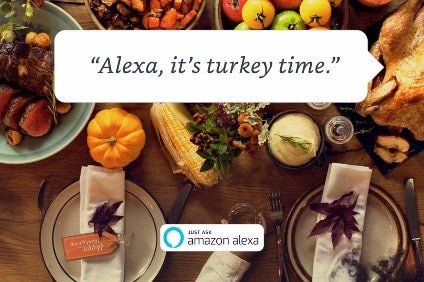Food Industry 2018: E-commerce Trends
Capitalizing on the rise of the e-commerce channel will be a priority for an increasing number of food company strategists in 2018. Andrew Pearl, director of market strategy and insights EMEA at e-commerce analytics company Profitero, offers four trends to watch in the channel in 2018.
2017 was another landmark year for the development of digital commerce and online grocery.
It saw Amazon acquire Whole Foods Market for $13.7 billion as the e-commerce giant ramps up its grocery ambitions.
Meal kit providers like HelloFresh and Gousto continue to grow, searches through mobile and voice assistants like Google Home and Amazon’s Alexa are on the rise, and British grocers Tesco and Sainsbury’s are expanding their one-hour grocery deliveries.
Earlier this year, Profitero surveyed 134 brands across more than 10 industries (including CPG brands) with the goal of understanding how brand manufacturers are structuring and planning for e-commerce in 2018.
Survey respondents cited year-over-year e-commerce growth as their most important KPI, with 47% of CPG brand respondents specifically stating their e-commerce growth goal for this year is 25% or more.
Respondents to Profitero’s global benchmarking survey cited year-on-year e-commerce growth as their most important KPI, making it clear that digital will remain central to the agenda as we move into 2018.
As we head into 2018, digital is expected to become central to growth strategies for consumer goods brands globally, here are four big trends to watch in the coming year.
Mobile First
In the UK, for example, mobile transactions now account for over 50% of e-commerce transactions across the UK.
As online becomes the fastest growing grocery sales channel and consumers increasingly demand frictionless shopping experiences, grocery and CPG brands need to optimize their product images, titles and descriptions to provide a simpler shopping experience on mobile devices.
We know that the majority of online grocery shoppers don’t click through to each product’s detail page to see and read all the product information, but simply add it to their cart from a thumbnail image, so mobile-friendly hero images aim to further enhance the online shopping experience.
A study conducted by Unilever showed that Magnum sales increased by 24% when they used hero images, highlighting that optimizing your content for mobile can make a big difference to your bottom line.
Voice Search
With over 20% of mobile searches being conducted via voice in 2016, focusing on optimizing your product for voice search is no longer a long-term priority.
The story continues
Morrisons and Ocado launched Alexa apps earlier this year allowing customers to add groceries to their shopping list by voice, while recent research conducted by IGD revealed that three in ten shoppers (28%) are interested in using voice-activated devices at home to add food and groceries to their online baskets.
The introduction of Amazon’s Choice in the US – Amazon’s product designation that identifies the “best” products in response to shoppers’ search queries or voice requests – means that Alexa voice-activated devices will now recommend best-selling brands in the food and grocery category.
Obtaining this designation may become increasingly a competitive imperative, as other retailers are likely to adopt similar features in the near future.
Amazon doesn’t disclose how products make it onto its Amazon’s Choice list, but the items tend to be highly-rated, affordable products that qualify for Prime shipping.
Increasing competition from digitally native brands
Following in the footsteps of Amazon’s launch of its private label Wickedly Prime range in the US, many established grocery brands have started to closely analyze these innovations as they offer shorter (and faster) time to market when launching through online channels.
In the US, Walmart’s Jet.com recently launched a private-label business called Uniquely J, which offers dozens of food and household products targeted at millennials.
They also launched Brandless, a direct-to-consumer site that sells everyday items like coffee, peanut butter, toothpaste, and hand soap. All of the products are organic, unbranded, and sold for a flat price of $3.
Is Amazon considering expanding Wickedly Prime to other international markets, and could we see a concept similar to Brandless popping up elsewhere?
A relentless focus on online availability
Establishing delivery within 30 minutes as the norm will require significant optimization of supply channels.
Creating a specific online replenishment strategy and monitoring performance daily has already delivered significant benefits for many grocery brands.
E-commerce data analytics platforms provide access to daily out-of-stock data, enabling brands to instantly respond to issues that ultimately lead to lost sales for both brands and retailers.
By clearly focusing on the products that are causing these lost sales, not only can you significantly improve your stock availability (both in-store and online), but you can also reduce the level of lost sales, which typically accounts for 3-5% of monthly sales.
The ability to respond quickly and innovate accordingly will give your brand the boost in annual growth it desires.
“The Food Industry 2018 – E-commerce Trends to Watch” was originally created and published by Just Food, a brand owned by GlobalData.
The information on this site is published in good faith and for general information purposes only. It is not intended to amount to advice on which you should rely and we make no representations, warranties or guarantees, express or implied, as to its accuracy or completeness. You should always obtain professional or specialist advice before taking, or refraining from, any action on the basis of the content on this site.


